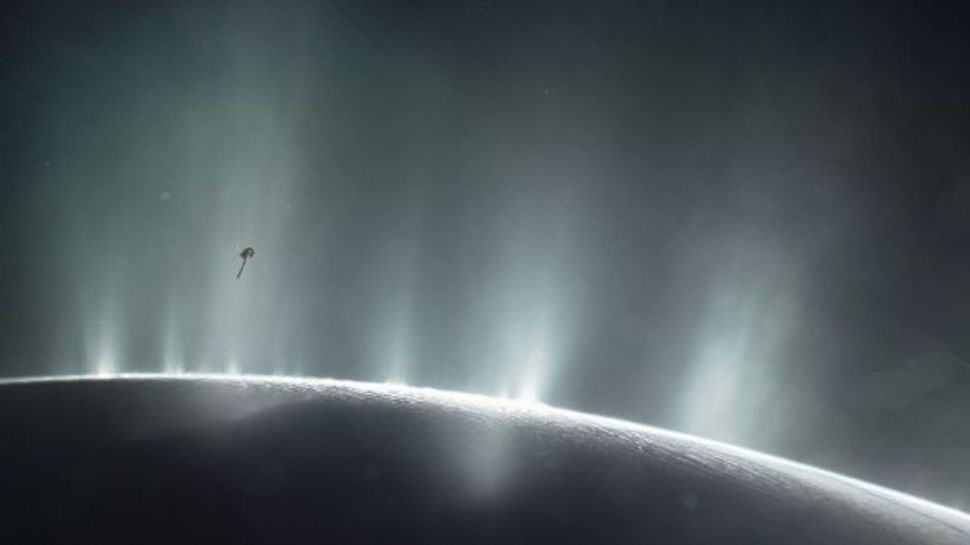Researchers itemized the emission — witnessed by the James Webb Space Telescope (JWST) in November 2022 — at a meeting at the Space Telescope Science Establishment in Baltimore on May 17.
Researchers got Saturn’s frigid moon Enceladus splashing a “immense crest” of watery fume far into space — and that tuft probably contains a significant number of the synthetic elements forever.
Researchers itemized the emission — witnessed by the James Webb Space Telescope (JWST) in November 2022 — at a meeting at the Space Telescope Science Establishment in Baltimore on May 17.
“It’s huge,” Sara Faggi, a planetary stargazer at NASA’s Goddard Space Flight Center, said at the meeting, as per Nature.com. As indicated by Faggi, a full exploration paper on the enormous tuft is forthcoming.
This isn’t whenever researchers first have seen Enceladus ramble water, however the new telescope’s more extensive viewpoint and higher responsiveness showed that the planes of fume shoot a lot farther into space than recently understood — ordinarily more profound, truth be told, than the width of Enceladus itself. (Enceladus has a measurement of around 313 miles, or 504 kilometers.)
Researchers originally scholarly of Enceladus’ watery impacts in 2005, when NASA’s Cassini space apparatus discovered frigid particles shooting up through enormous lunar breaks called “tiger stripes.” The impacts are strong to the point that their material structures one of Saturn’s rings, as per NASA.
Investigation uncovered that the planes contained methane, carbon dioxide and smelling salts — natural particles containing compound structure blocks vital for the improvement of life. It’s even conceivable that a portion of these gases were created by life itself, burping out methane far below the outer layer of Enceladus, a global group of specialists set in research distributed last year in The Planetary Science Diary.
Water is one more piece of proof for the situation for conceivable life on Enceladus. Enceladus is completely encrusted in a thick layer of water ice, yet estimations of the moon’s pivot propose that a huge sea is concealed underneath that frozen outside. Researchers think the sprays of water detected by JWST and Cassini come from aqueous vents in the sea depths — a speculation upheld by the presence of silica, a typical fixing in planetary outsides, in the fume crest.
NASA researchers are talking about future return missions to search out indications of something going on under the surface on Enceladus. The proposed Enceladus Orbilander would circle the moon for around a half year, flying through its watery tufts and gathering tests. Then, the shuttle would change over into a lander, dropping on the outer layer of the frigid moon. Orbilander would convey instruments to gauge and examine particles, as well as a DNA sequencer and a magnifying lens. Cameras, radio sounders and lasers would remotely filter the moon’s surface, The Planetary Society announced.
One more proposed mission includes sending an independent “snake robot” into the watery profundities underneath Enceladus’ surface. The robot, named the Exobiology Surviving Life Assessor, highlights cameras and lidar on its head to assist it with exploring the obscure climate of Enceladus’ sea depths.









































